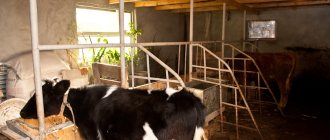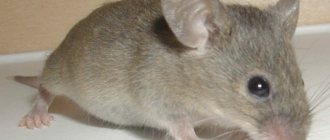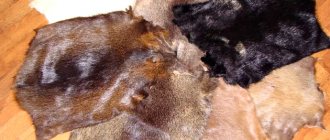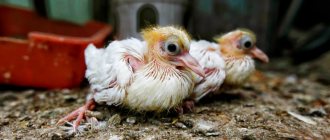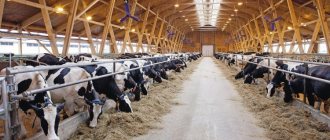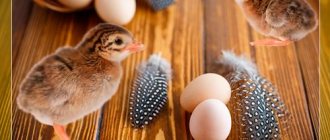Where to start cutting up a rabbit carcass?
There is no current state standard for cutting rabbits. There is only a culinary scheme that divides rabbit meat with bones into 2 groups: hard and less hard, according to which the bones of the rabbit are separated from the muscles that work the most, accordingly they are tougher, and they will have to be boiled or stewed longer. Another muscle group, often at rest, is less rigid and needs to be cooked less.
Attention. The smaller the rabbit's carcass, the younger it is.
Where to start cutting up a rabbit carcass?
- First we separate the hind legs
- Then we separate the front legs
- We take out the giblets from the inside of the rabbit carcass
- Cutting off the peritoneum from a rabbit carcass
- Cut the back of the ridge into 3-4 parts
- Cut the breastbone into 4-5 pieces
Attention. If you get a rabbit with a head and paws, then the head of the rabbit carcass is separated along the first cervical vertebra. The head and ends of the legs do not go into food. The front legs are separated at the carpal joint, and the hind legs at the hock.
Cutting up a rabbit carcass
What are the signs to determine when it’s time to slaughter an animal?
The time must be chosen depending on the goals. If you want to get tender rabbit meat, you can kill it any day after the rabbit reaches the required parameters
If it is important to obtain not only meat products, but also high-quality skins, you need to take into account some nuances. The molting stage is of great importance: if you kill a rabbit ahead of schedule, you will get a poor-quality skin, from which half of the fibers will fall out after a short time
Useful tips for choosing the most suitable time for slaughter:
- Those born in the winter months are best slaughtered at four months of age.
- If the birth occurred in the summer months, all stages of molting will be completed in November.
- You cannot slaughter vaccinated individuals if less than 30 days have passed since the procedure.
- For most breeds, the optimal time for slaughter is when the average rabbit weighs 1.6 kg.
- The best period for slaughter is from November 1 to March 15.
Cutting a rabbit carcass - hind legs
How to separate the hind legs from a rabbit carcass?
- Turn the rabbit carcass on its side.
- We bring a sharp knife into the protrusion on the thigh.
- We make an incision all the way towards the sacrum.
- We divide the thigh and leg into 2 parts.
- We do the same with the other leg.
From the hind legs of a rabbit you can prepare:
- Potatoes with rabbit, stewed in the oven
- Rabbit pastrami
- Rabbit in dry white wine
- Rabbit pilaf
Attention. The back legs of a rabbit carcass have the most meat.
Place and tools for cutting at home
To make butchering a rabbit as convenient and quick as possible, you need to prepare a workplace and available tools.
This should be done according to the algorithm:
- First, you will need to remove the skin from the carcass. This step is best done by hanging the rabbit by its hind legs. The paws can be attached either to a specially installed horizontal pole (the installation of such structures is usually carried out in private homes, where animals are slaughtered and butchered on an ongoing basis), or to an ordinary thick stick fixed between two stable supports. To cut the skin you will need scissors and a sharp knife.
- After the skin is removed, the carcass must be untied from the horizontal fastening, and then a table must be prepared for further cutting and gutting of the rabbit. It is necessary to remove foreign objects from the working surface, and then wipe it with a damp cloth and let it dry. Additional tools you will need are a rag (to promptly remove dirt from the work surface), as well as a small hatchet or special scissors for cutting carcasses.
- After cutting, it is recommended to rinse the carcass thoroughly in running water, wiping it with the hard side of the sponge. This will help minimize the chance of contamination or blood remaining on the meat.
Cutting a rabbit carcass - front legs
How to separate the front legs from a rabbit carcass?
- Turn the rabbit carcass on its side.
- We press on the bottom of the foot, look where the shoulder protrudes.
- We make a cut around the shoulder.
- We press deeper in this place with a knife until the leg is separated from the carcass.
- Cut the leg into 3 parts.
- We also cut off the other leg.
From the front legs of a rabbit you can prepare:
- Roast rabbit with potatoes in sour cream
Cutting a rabbit carcass: hind legs
Preparation for slaughter
Before slaughter, animals are not fed for 12 hours; they are only allowed to give them water. This measure will avoid contamination of wool during slaughter. Shortly before the killing procedure, the pets' fur is checked for tangles and dirt. If necessary, wash contaminated areas with warm water. Using a brush, the fur is tidied up, getting rid of lost hairs.
Attention! Before slaughter, animals are examined by a veterinary service employee if their meat is intended for sale and not for personal use.
The farmer needs to prepare tools for slaughter. They can be different, depending on the chosen method of killing animals:
- a stick with one end wrapped in rubber;
- electrodes;
- syringe;
- pin-needle.
Rabbit slaughter
In addition to the listed tools, you will need several knives - one for bleeding, another for skinning, and a stick-spacer for hanging the animal. You also need to prepare containers for collecting blood and internal organs, a basin with warm water, soap and a towel.
Cutting a rabbit carcass - offal
How to separate offal from a rabbit carcass?
- Kidneys . Usually the kidneys are covered with a layer of fat. It is used for cooking. Kidneys are also used; rabbit kidneys do not have a specific smell, and they are not soaked like pork, but are immediately prepared for the dish.
- Above the kidneys, in the hypochondrium, are the liver, heart and lungs . We trim the diaphragm a little and take out the offal. We separate them from the membranes.
From rabbit offal you can prepare:
- Pate
- Roast
Attention. Rabbit giblets are tender, cook quickly, and the dishes turn out delicious.
Features of rabbit meat
Rabbit meat is highly valued due to its low fat content and easy digestibility. It can be included in the diet of young children as the first meat food. Let's consider the advantages of the product:
- Low calorie content - 183 kcal/100 g. Those wishing to lose weight are recommended to include rabbit meat in the menu, as it consists of 21% protein and contains almost no fat.
- Delicate structure and pleasant taste. It’s no wonder that rabbit dishes are served in the best restaurants.
- The product does not cause allergies.
- It contains essential amino acids that a person can only obtain from food.
- Rabbit meat is 90% digestible, unlike other types of meat.
Cutting a rabbit carcass - back of the ridge
How to separate the back part of the ridge from a rabbit carcass?
- We divide the ridge with a sharp knife or kitchen scissors into 3-4 parts.
Attention. You should try to cut a rabbit bone in one fell swoop so as not to crush it into small and sharp fragments that can get into the food and injure the mucous membrane of the mouth, and this is quite possible, since the rabbit bones are thin and tubular.
From the backbone of a rabbit you can prepare:
- Soup
- Bouillon
- Cabbage soup
- Diet borscht
Attention. Ridge rabbit meat is very similar to chicken meat.
Choosing a slaughtered rabbit
It will be possible to successfully cut a rabbit into portioned pieces only if the carcass itself was chosen correctly.
It is recommended to select meat according to standard rules:
- the purchased carcass must have a uniform color over the entire surface (bruises, bruises and other local color changes indicate low quality of the product). Using bad meat can not only lead to a deterioration in the taste of the final dish, but also provoke temporary dysfunction of the digestive system due to the progressive development of pathogenic microflora in the carcass;
- when choosing from a large assortment of carcasses, it is recommended to give preference to the one in which one of the legs is not skinned (this feature is considered proof that the meat being purchased is indeed rabbit meat);
- a slaughtered rabbit should not have a pungent odor, as well as visible damage to its integrity (dents, cuts, etc.);
- When purchasing a carcass, it is important to ensure that it is tightly packaged by the manufacturer (the rabbit should be on the counter in vacuum packaging).
If the purchased rabbit is placed in the manufacturer's packaging, you need to make sure that the expiration date indicated on the purchased product is not only normal, but also has a reserve.
Cutting a rabbit carcass - breastbone
Of the entire rabbit carcass, we only had the sternum.
How to cut the breastbone from a rabbit carcass?
- First cut the sternum along the ridge into 2 parts.
- Cut off the neck.
- Cut 1 part of the ribs into 2 pieces, then 2 parts - also into 2 pieces.
From the neck part of a rabbit you can prepare:
- Soup
- Bouillon
- Aspic
You can cook rabbit ribs:
- Stew
- Roast
- Stewed potatoes with ribs
What do we get when cutting up a rabbit carcass?
The following parts of meat with bones are obtained from a rabbit carcass:
- Hind and front legs (8 parts) with bones and meat, used for cooking roast.
- Neck, 4 pieces of ribs with meat, 3-4 pieces of back, can be used for soups, borscht, broths.
- You can remove the fillet along the ribs and back, as well as 2 pieces of peritoneum. Rolls are prepared from this part of the rabbit, and they can be stuffed with porridge with mushrooms, dried fruits and others.
- We prepare pate and soup from the offal (kidneys, liver, heart, lungs).
Attention. After cutting a rabbit carcass, evaluate the quality of the meat by smell; if it has a not very pleasant smell (male inseminator, old rabbit) - it needs to be soaked in white wine, whey, milk, cream, sour cream diluted to a liquid state, or a slightly diluted vinegar solution .
So, we have learned how to properly cut a rabbit carcass into pieces.
Why do they do castration?
Castration of piglets is an event aimed at shutting down the animal’s reproductive glands. There are many methods of performing the procedure, chemical, knife and radiation are widely used. Despite the huge choice, surgery is a priority due to its ease of execution and low cost.
Only a doctor can perform castration, following all recommendations
After castration, the animal’s body undergoes significant changes (metabolic intensity decreases, hormonal profile changes, etc.), as a result, independent reproduction of offspring becomes impossible.
The main reasons why the gonads are removed are:
- Changes in psycho-emotional behavior. Pigs become calmer, episodes of aggression, in which the animal is prone to fights, become very rare.
- Absence of periods of searching for a sexual partner, during which appetite and the amount of food consumed decrease. The individual gains body weight constantly. Rapid weight gain allows you to save on the purchase of feed.
- Improving the taste and weight characteristics of meat.
- Breeding healthy offspring.
Not all boars are suitable for fertilizing females. Casual sexual intercourse often leads to malformations of animals and intrauterine death. After the technique, the risk of accidental insemination is reduced to zero. The meat of the operated animal is tender and has a pleasant taste.
Important. There are medical indications for castration
These include: malignant and benign neoplasms in the gonads, infectious and inflammatory pathologies, hernias.
Video: The Art of Butchering a Rabbit
We recommend reading:
- How to cook rabbit in sour cream
- How to cook buckwheat deliciously
- What is the difference between a wild and domestic rabbit and a hare?
- The best recipes for dishes with soy sauce made from pork, chicken, turkey, duck, rabbit
- Decorative rabbits: care and maintenance at home x
How best to slaughter an animal
All methods are divided into those that occur with blood and those that do not. The latter are much more humane, due to the fact that the animals hardly suffer before death.
- During the bloodless method, the slaughterer's primary task is to shut down the rabbit's central nervous system. Only after killing the animal can you begin to release blood from it.
- During a bloodbath, the slaughterer simply makes an incision in the artery and leaves the animal in limbo to bleed until the last red drop leaves the carcass.
The main role in the choice of method is played by the cultural characteristics of the people, which includes the rabbit breeder. For example, for adherents of Islam, bloody slaughter is preferable, since it is believed that while the heart muscle is contracting, the rate of blood leaving the carcass is greater. But in Europe, humanism comes first, so they use bloodless methods to relieve the animal from terrible pain.
Training video: Slaughtering rabbits at home in 1.5 minutes. LPH Sakhon
slaughter and butchering of rabbit
Rabbit slaughter training video home mini slaughterhouse
How to kill an animal bloodlessly
First of all, the animal must be immobilized and its central nervous system disabled in order to remove sensitivity. This is done as follows:
- To cause a quick death, the rabbit takes its hind legs in its left hand and lowers itself head down. After which, with the right hand using a wooden stick, a targeted sharp blow is made to the occipital region. Use maximum force for this, this is the only way to kill the animal with the first blow and save it from further suffering.
- A good blow to the right place destroys the spinal cord and causes instant death. Blood exits through the ears, nose and mouth. Experienced farmers do not need a killing stick; they cope with the edge of their own right palm.
Mortification in French
Only a physically strong person, one who has strong arms and a developed shoulder system, can kill an animal in this way at home. Otherwise, after the first time the goal will not be achieved, and accordingly, the fluffy will suffer for a long time.
You need to put the rabbit on a horizontal plane, cover both of its legs with one hand, and the ears with the other. You need to grab it as tightly as possible so that at the most important second the animal does not slip out of your palms.
After the rabbit relaxes and stops twitching, you should sharply spread your arms in different directions. A strong tug inside the carcass will rupture vital arteries and death will occur within a second. It’s better to first watch a video describing this technique.
Electric current for quick slaughter
You can quickly kill a rabbit using a strong electric shock, but to implement this method you need a special device: an electrical cord with 2 sharp metal pins at one end and a plug at the other.
The first pin should be carefully inserted into the animal's buttock, the second - into the area of the back of the head between the ears or into the temple. The minimum effective current is 5 amperes. Having completed the preparatory steps, you need to plug in the stun gun, and as soon as the animal is shocked, it will die immediately.
Slaughter by fracture
In order to take the life of an animal at home, you can twist its head with a sharp movement. To do this, you need to cover the back of the body with your right hand, and your neck with your left (fingers should be clasped under the chin). In order to break the cervical vertebrae, you need to twist your left arm at least 250°C.
Air embolism
To kill in this way, air must be forced through the veins. You need to take a large syringe or rubber bulb and inject as much air as possible into the vein located on the rabbit's ear. This method cannot be called the most humane, since death occurs after a moment of suffering for the animal.
Shooting pin
To slaughter rabbits using this method, you need to purchase a needle pin. This is a special device that shoots a needle. The main thing that is required is to correctly determine the zone and relf prick. To do this, you need to mentally draw two lines: right eye - left ear and left eye - right ear. You need to shoot as accurately as possible at the point of their intersection.
The animal expects instant death. Rabbits are usually slaughtered in this way in countries where bloody methods are prohibited by law.
